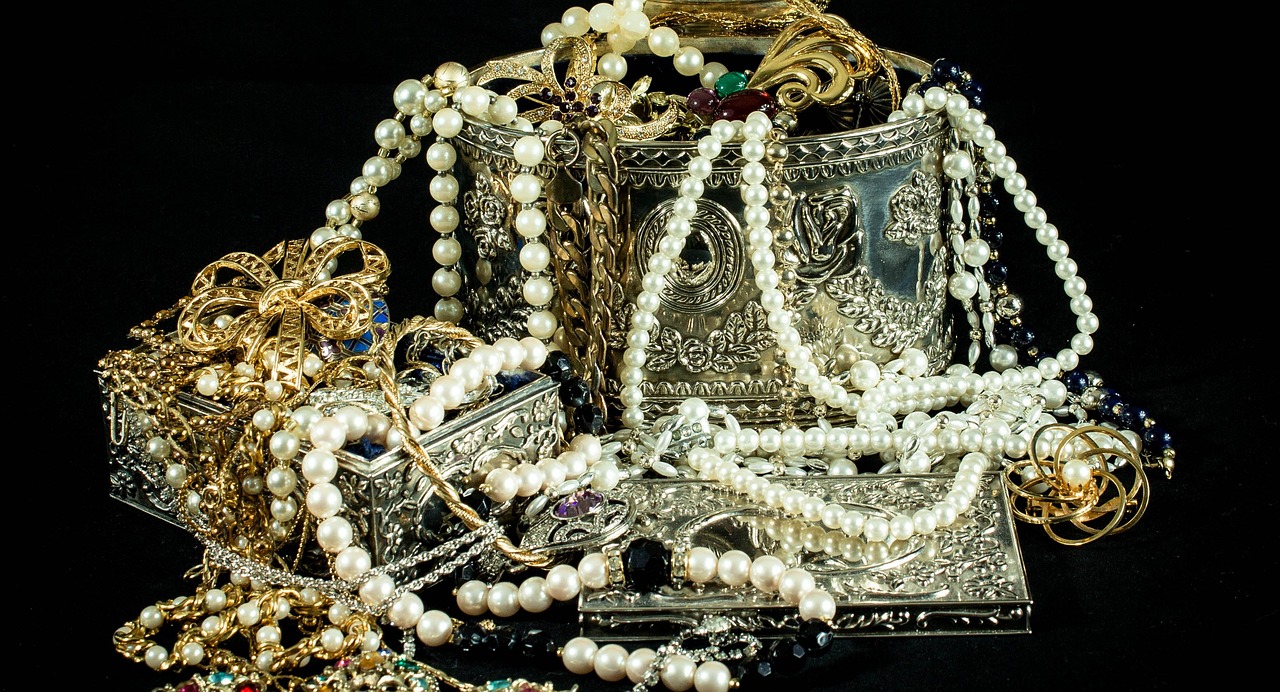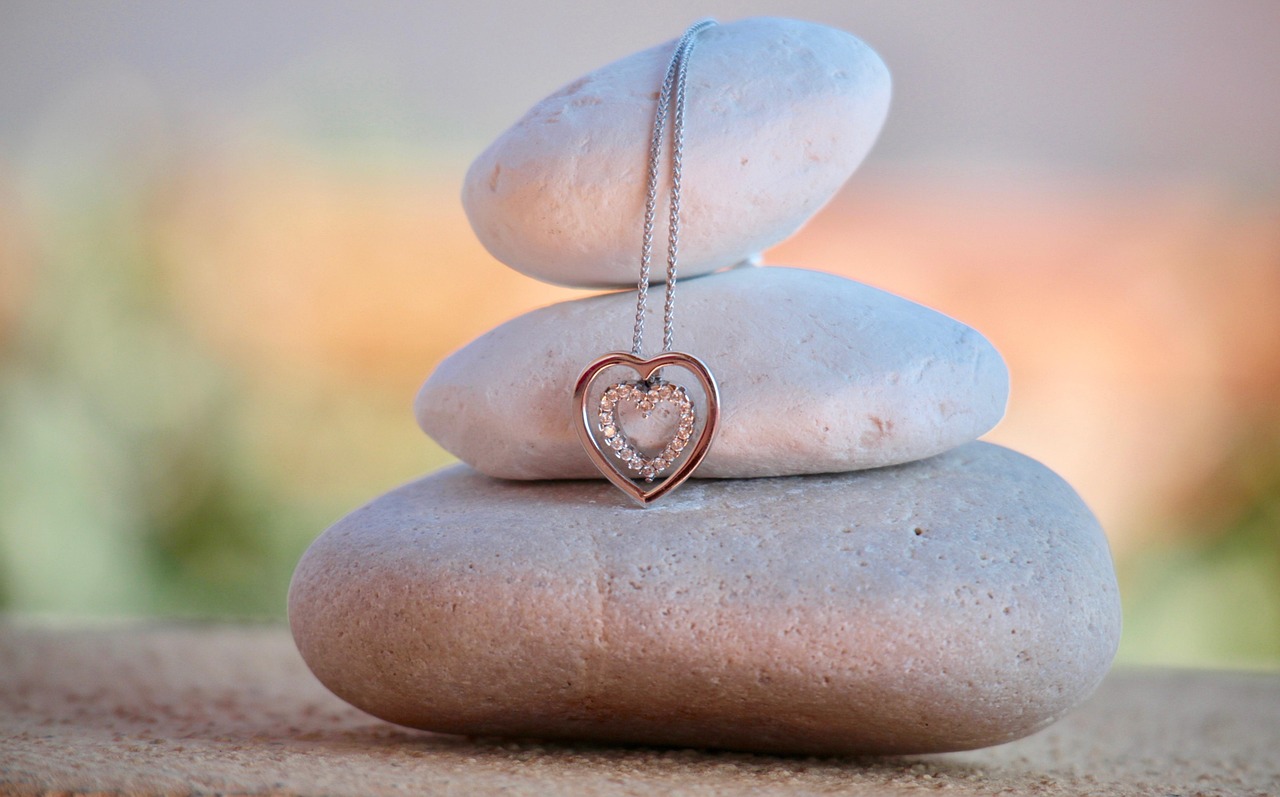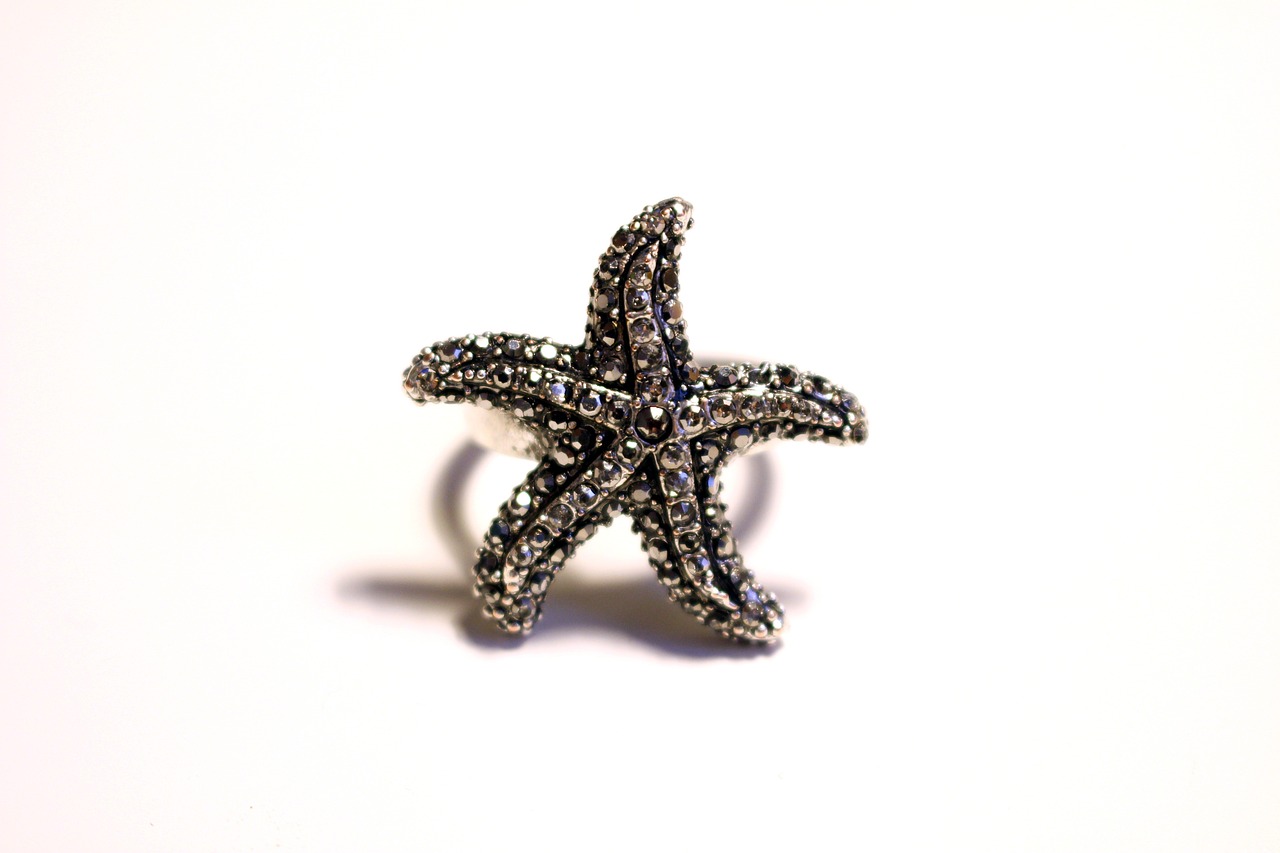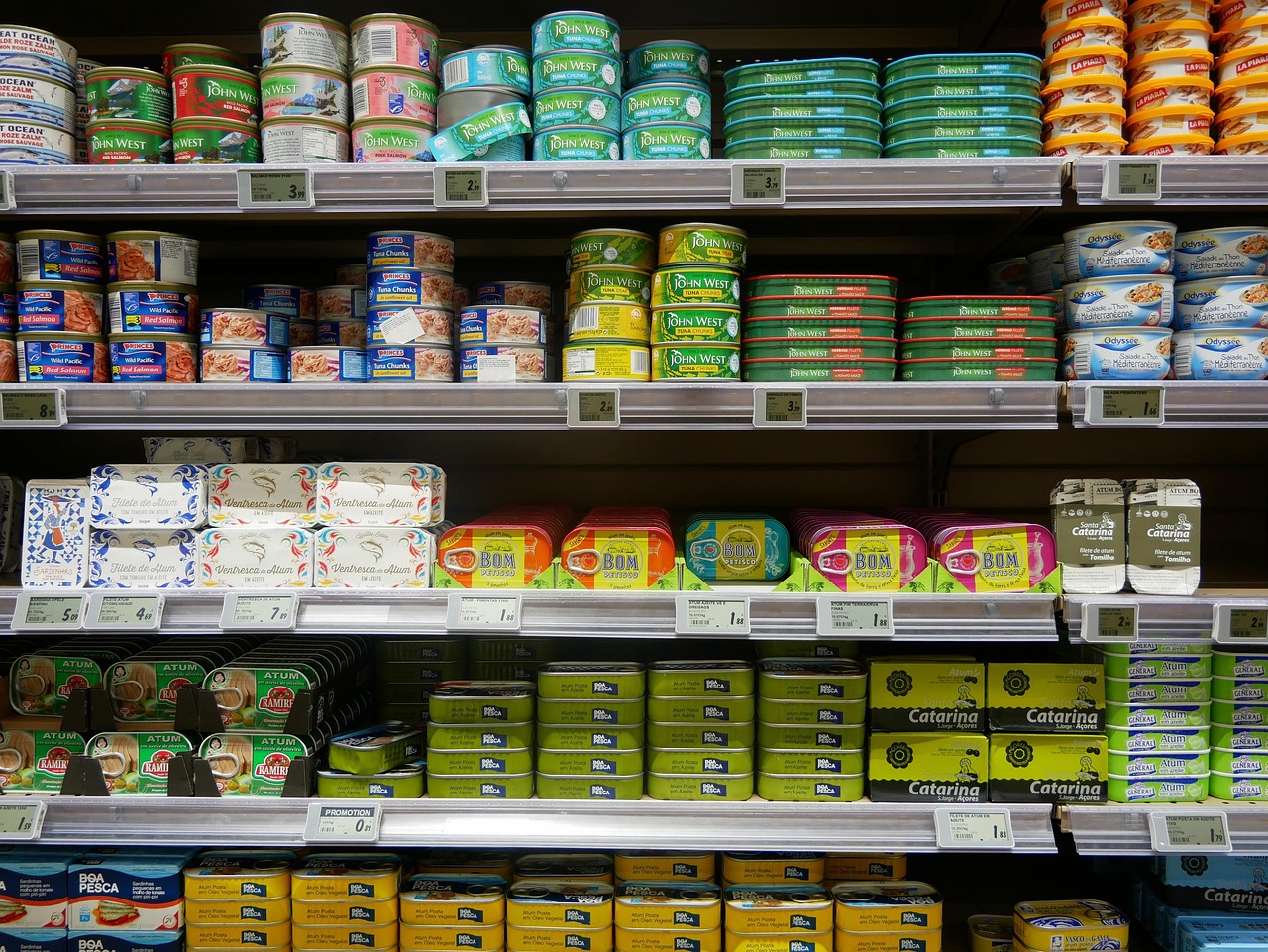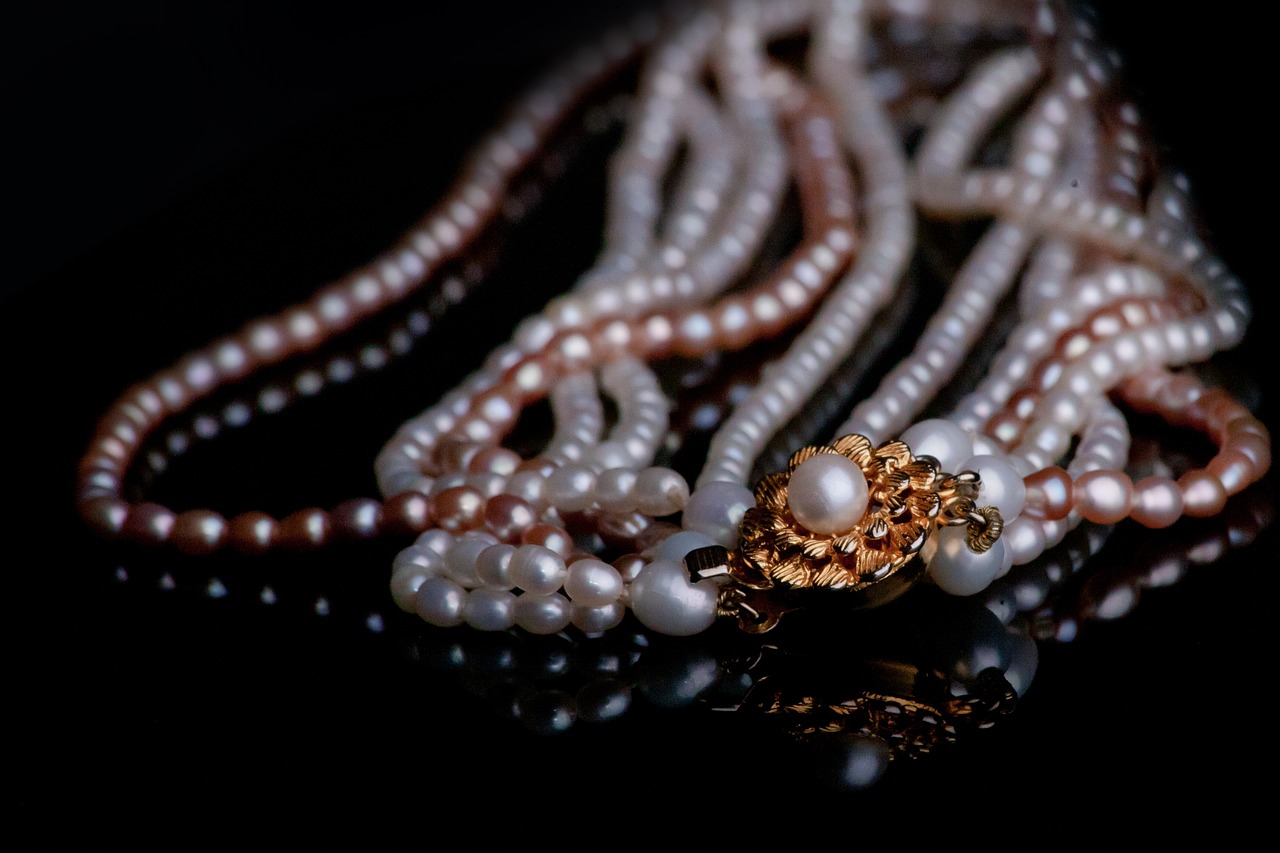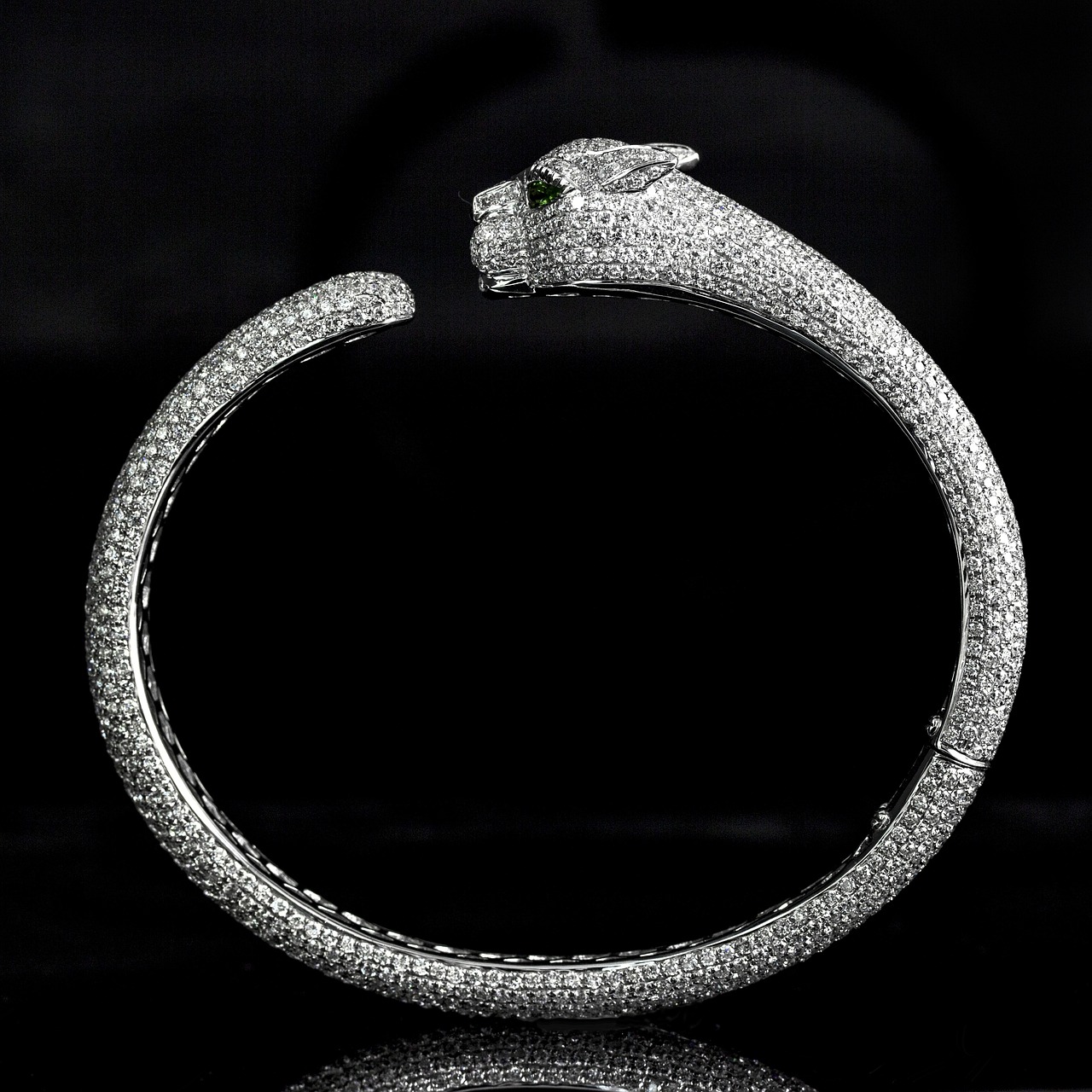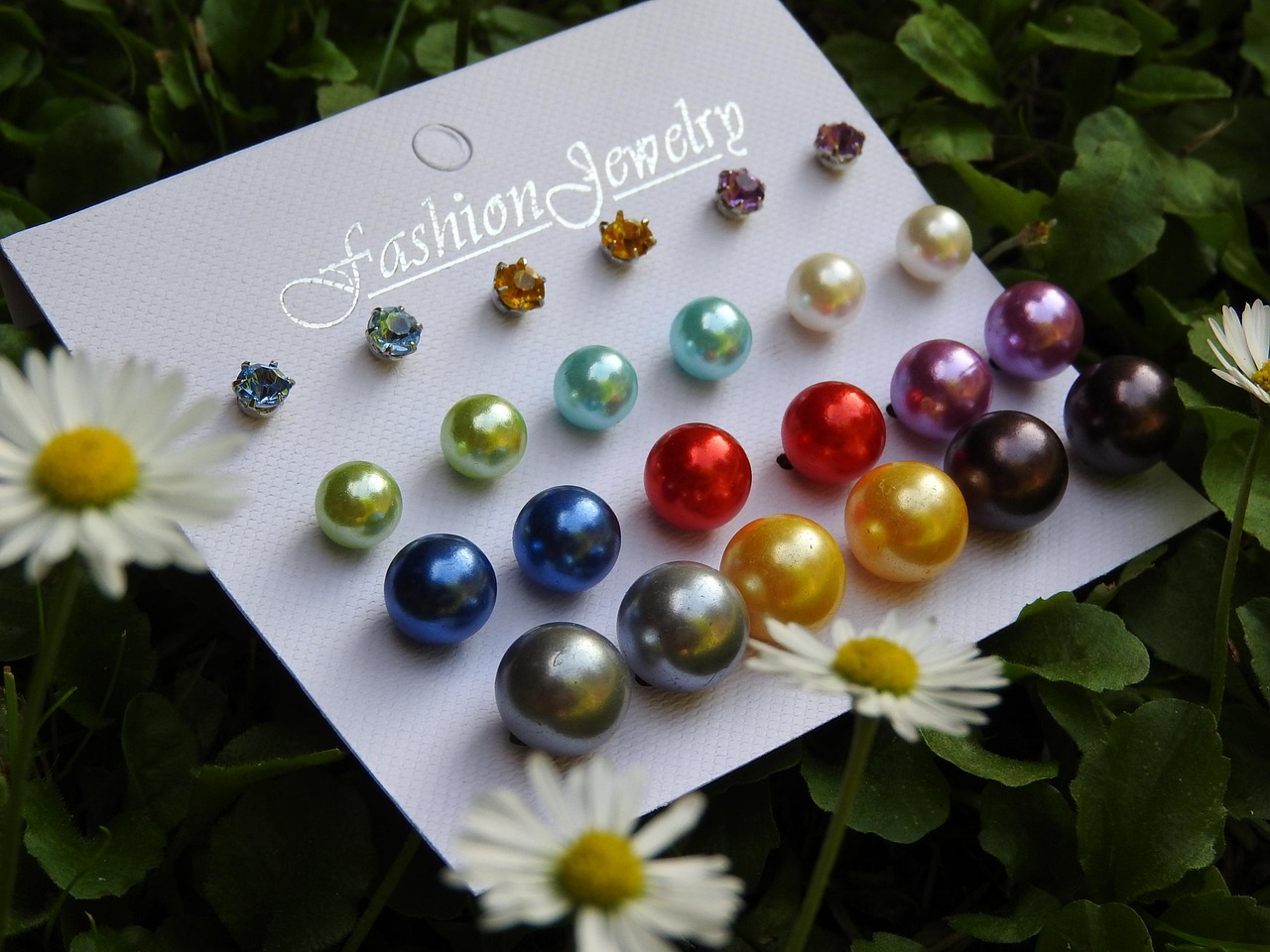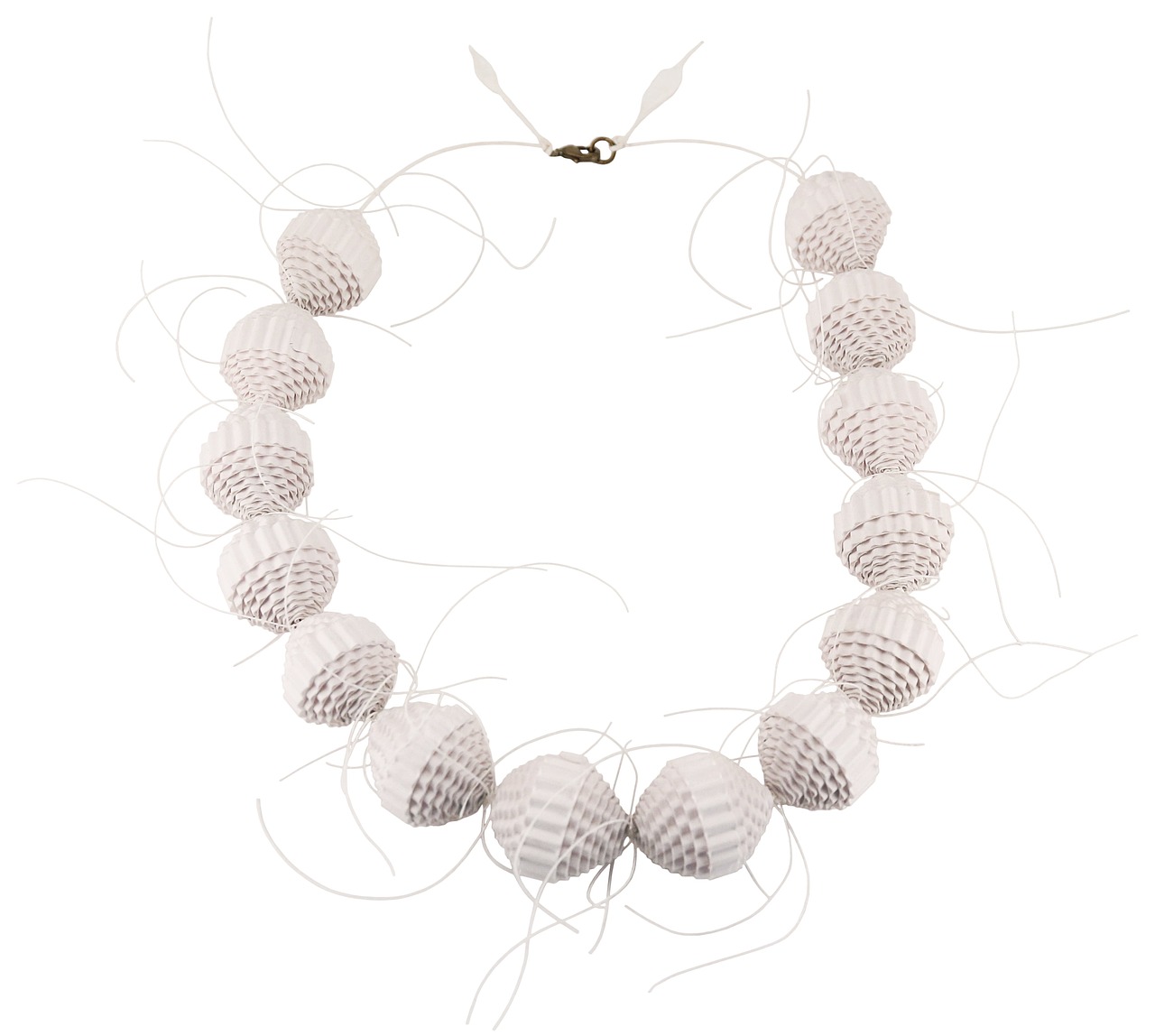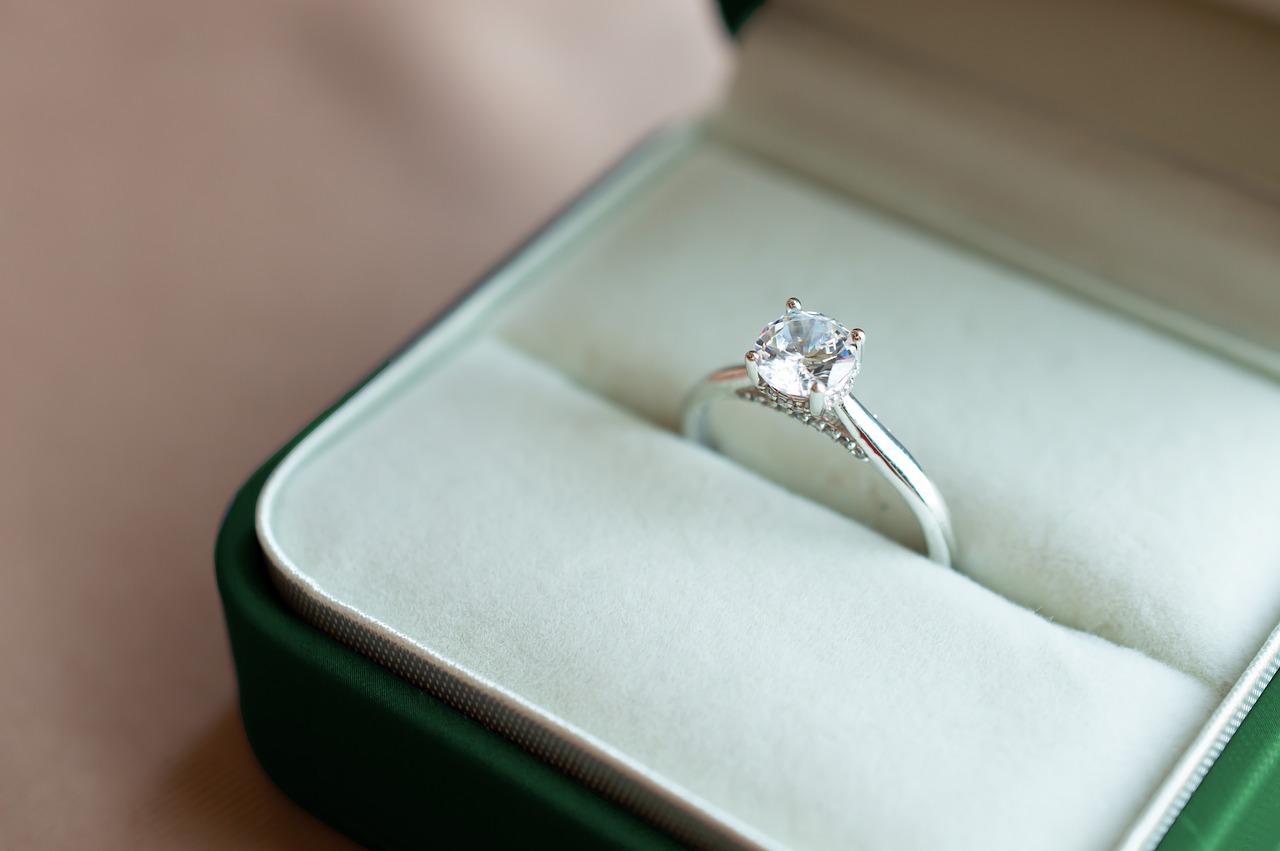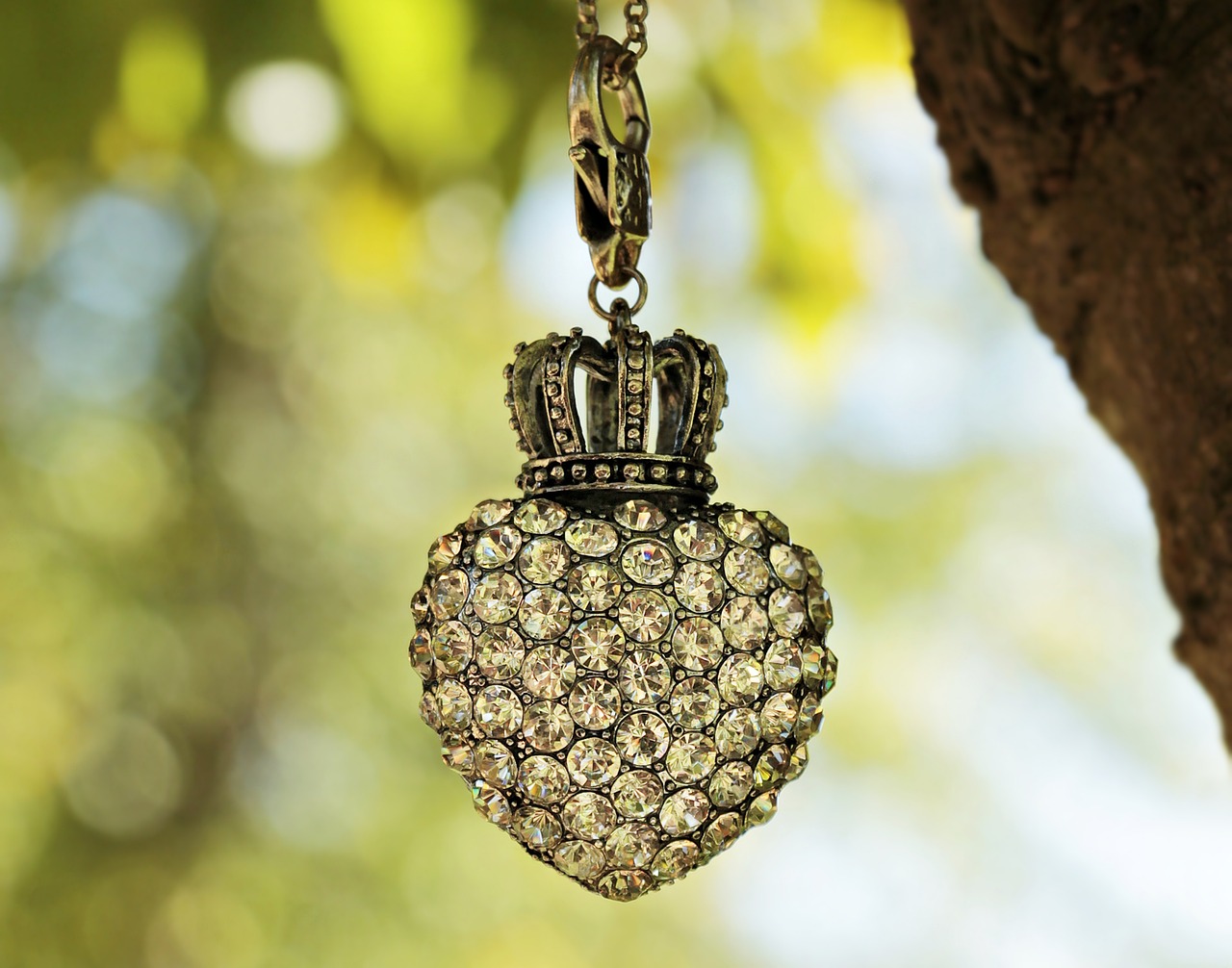This article serves as a comprehensive guide on effective jewelry cleaning methods, detailing what works best and what should be avoided to maintain your jewelry’s beauty and longevity. Proper care and cleaning can extend the life of your precious pieces, ensuring they remain stunning for years to come.
Understanding the significance of jewelry cleaning is crucial for preserving your pieces. Regular maintenance helps prevent tarnishing, enhances shine, and prolongs the lifespan of your treasured items. Neglecting to clean your jewelry can lead to a buildup of dirt and oils, which can dull their appearance.
Exploring various cleaning methods can help you find the most effective solutions. From ultrasonic cleaners to simple soap and water, each method has its advantages and limitations.
Soap and water is a gentle yet effective cleaning method suitable for most jewelry types. This method is easy to execute and can be done at home with minimal supplies.
Selecting a mild dish soap or a specialized jewelry cleaner is essential. Avoid harsh chemicals that can damage sensitive materials and gemstones. Always read labels to ensure the product is safe for your specific jewelry.
Gently scrubbing with a soft-bristle toothbrush can help remove dirt and grime without scratching the surface. Rinse thoroughly and dry with a soft cloth for best results. This method is particularly effective for intricate designs where dirt may accumulate.
Ultrasonic cleaners use high-frequency sound waves to agitate a cleaning solution, effectively removing dirt from intricate designs. This method is highly effective but may not be suitable for all jewelry types, especially those with loose stones or delicate materials.
Certain cleaning practices can damage your jewelry. Understanding what to avoid is just as important as knowing what works.
Avoid using bleach, ammonia, or other harsh chemicals that can corrode metal and damage gemstones. Always opt for gentle, jewelry-specific cleaning solutions to ensure the safety of your pieces.
While it’s important to clean your jewelry, excessive scrubbing can lead to scratches and loss of luster. Use gentle motions to preserve the integrity of your pieces. Remember, less is often more when it comes to cleaning.
The frequency of cleaning depends on how often you wear your jewelry and the materials involved. Regular maintenance can help keep your pieces looking their best.
Jewelry worn daily, like rings and bracelets, may require more frequent cleaning. In contrast, pieces worn occasionally can be cleaned less often, depending on their exposure to dirt and oils. Establishing a routine can help you stay on top of your jewelry care.
Look for signs like dullness, discoloration, or visible dirt. These indicators suggest it’s time for a thorough cleaning session to restore your jewelry’s shine. Regular checks can help you maintain the beauty of your collection.
Yes, many jewelry cleaning methods can be performed at home with common household items. This accessibility makes it easy to maintain your jewelry without professional help.
Homemade cleaning solutions, such as vinegar or baking soda, can effectively clean certain types of jewelry. However, it’s essential to know which methods are safe for your specific pieces. Always test a small area first to avoid damage.
For valuable or delicate items, consider professional cleaning services. Experts can provide deep cleaning and repairs that may not be achievable at home. Investing in professional care can be beneficial for maintaining high-value pieces.

Why Is Jewelry Cleaning Important?
Jewelry is not just an accessory; it often holds significant emotional and monetary value. Therefore, understanding the importance of jewelry cleaning is essential for anyone who wishes to maintain their cherished pieces. Regular maintenance is not merely a matter of aesthetics; it plays a vital role in preserving the integrity and lifespan of your jewelry.
Over time, jewelry can accumulate dirt, oils, and tarnish, which can dull its shine and even lead to irreversible damage. This is particularly true for pieces made from precious metals and adorned with gemstones. By implementing a regular cleaning routine, you can effectively prevent tarnishing, enhance the shine of your jewelry, and prolong the life of your treasured items.
Neglecting to clean your jewelry can result in several issues:
- Tarnishing: Silver and other metals can tarnish over time, leading to a dull appearance.
- Loss of Luster: Oils from your skin can accumulate on jewelry, making it look lackluster and dirty.
- Damage to Gemstones: Dirt and grime can scratch or dull the surface of gemstones, diminishing their brilliance.
- Allergic Reactions: Build-up of dirt and oils can cause skin irritations or allergic reactions, especially with sensitive skin.
Regular cleaning not only removes dirt but also restores the natural luster of your jewelry. When you clean your pieces, you are essentially removing the layers of grime that can accumulate, allowing the inherent beauty of the materials to shine through. Using appropriate cleaning solutions can rejuvenate your jewelry, making it look as good as new.
The frequency of cleaning largely depends on how often you wear your pieces. For instance, daily wear items like rings and bracelets may require cleaning once a week, while occasionally worn pieces can be cleaned monthly. Keeping an eye out for signs such as dullness or discoloration can also indicate when it’s time for a cleaning.
While many people opt for at-home cleaning methods, there are significant benefits to seeking professional help. Experts can provide deep cleaning and repairs that might be challenging to achieve on your own. They have access to specialized tools and solutions that can restore jewelry to its original condition without causing damage.
In conclusion, understanding the significance of jewelry cleaning is crucial for preserving your pieces. Regular maintenance helps prevent tarnishing, enhances shine, and prolongs the lifespan of your treasured items. By adopting a consistent cleaning routine and being aware of when to seek professional assistance, you can ensure that your jewelry remains as stunning as the day you acquired it.
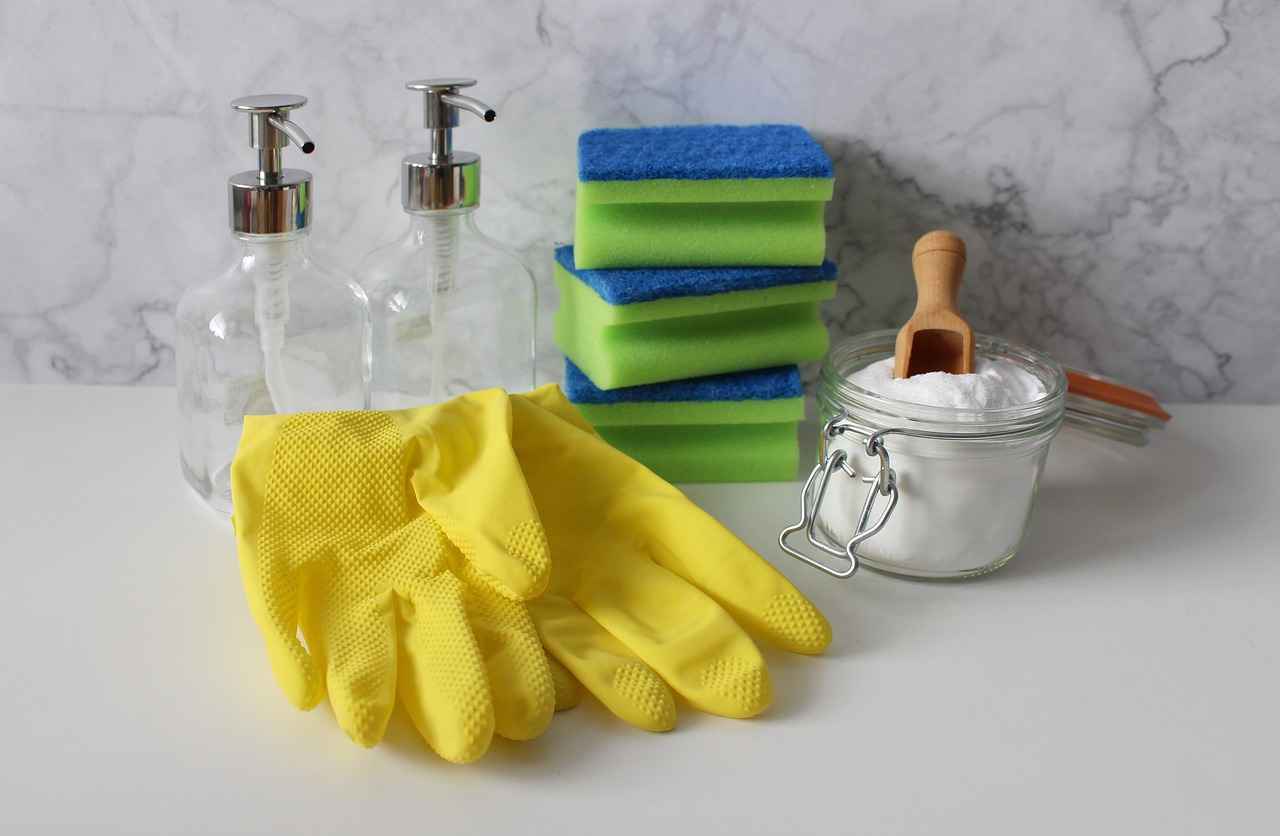
What Are the Best Jewelry Cleaning Methods?
When it comes to maintaining the beauty and longevity of your jewelry, understanding the various cleaning methods available is essential. Different techniques can yield different results, and knowing which method to use can make all the difference in preserving your treasured pieces.
Exploring various cleaning methods can help you find the most effective solutions. From ultrasonic cleaners to simple soap and water, each method has its advantages and limitations. Here’s a closer look at some popular cleaning techniques:
- Soap and Water: This traditional method is safe for most jewelry types. Using a mild soap mixed with warm water, you can gently clean your pieces at home. Ensure you rinse thoroughly and dry them with a soft cloth.
- Ultrasonic Cleaners: These devices use high-frequency sound waves to agitate a cleaning solution, effectively removing dirt from intricate designs. While highly effective, they may not be suitable for all materials, particularly soft gemstones.
- Steam Cleaning: This method utilizes high-pressure steam to remove dirt and grime. It is particularly effective for diamond and gold jewelry but should be avoided for porous stones.
- Vinegar and Baking Soda: This DIY solution can help clean tarnished silver. Mix equal parts of vinegar and baking soda to create a paste, apply it to the jewelry, and rinse thoroughly.
Each cleaning method has its pros and cons, making it crucial to choose wisely based on the type of jewelry you own.
Before selecting a cleaning method, consider the following factors:
- Material: Different materials require different care. For example, pearls and opals are sensitive to harsh chemicals and should be cleaned with gentle solutions.
- Design Complexity: Intricate designs may trap dirt, making ultrasonic cleaners a good option, while simpler pieces can be easily cleaned with soap and water.
- Value: For high-value items, it may be worth investing in professional cleaning services to ensure they are cared for properly.
Using the wrong cleaning method can lead to damage. Here are some common mistakes to avoid:
- Harsh Chemicals: Avoid bleach and ammonia, as they can corrode metals and damage gemstones.
- Excessive Scrubbing: While cleaning is important, excessive scrubbing can scratch surfaces and lead to loss of shine.
- Ignoring Manufacturer Instructions: Always check if the manufacturer provides specific cleaning guidelines for your jewelry.
By being mindful of these factors, you can ensure that your jewelry remains in excellent condition for years to come.
The frequency of cleaning depends on how often you wear your jewelry. Daily wear items, like rings and bracelets, may require more frequent cleaning, while pieces worn occasionally can be cleaned less often. Look for signs of dirt, dullness, or discoloration, which indicate it’s time for a cleaning session.
Overall, exploring various cleaning methods can help you find the most effective solutions tailored to your jewelry’s specific needs. With the right approach, you can maintain the beauty and integrity of your cherished pieces.
Using Soap and Water: A Safe Approach
When it comes to maintaining the beauty of your jewelry, using soap and water is a safe and effective approach that is suitable for a variety of jewelry types. This cleaning method is not only simple to execute but also requires minimal supplies, making it an excellent choice for at-home maintenance.
The primary reason to choose soap and water is its gentleness. Unlike harsh chemicals that can cause damage, a mild soap solution can effectively remove dirt and grime without harming your jewelry. This method is particularly beneficial for everyday pieces that are prone to accumulating oils and residues from skin contact.
When selecting a soap for cleaning your jewelry, it is essential to opt for a mild dish soap or a specialized jewelry cleaner. Avoid products that contain harsh chemicals, as they can corrode metals and damage delicate gemstones. Look for soaps that are free from dyes and fragrances, as these can leave residues that dull the shine of your jewelry.
- Gather Your Supplies: You will need a bowl, warm water, mild soap, and a soft-bristle toothbrush.
- Create the Solution: Mix a few drops of soap into a bowl of warm water until it is well combined.
- Soak Your Jewelry: Place your jewelry in the solution and let it soak for a few minutes to loosen any dirt.
- Gently Scrub: Using the soft-bristle toothbrush, gently scrub the jewelry, focusing on intricate designs where dirt tends to accumulate.
- Rinse Thoroughly: After scrubbing, rinse the jewelry under lukewarm water to remove any soap residue.
- Dry Carefully: Use a soft, lint-free cloth to dry your jewelry completely.
One of the significant advantages of this cleaning method is its affordability. Most households already have the necessary supplies on hand, making it a cost-effective solution. Additionally, this method is environmentally friendly, as it avoids the use of harsh chemicals that can be harmful to the environment.
While soap and water is a safe method, there are a few precautions to keep in mind. Avoid using hot water, as it can cause delicate gemstones to crack or become loose in their settings. Also, be cautious with pieces that contain porous gemstones, such as pearls or opals, as they may absorb moisture and become damaged.
The frequency of cleaning depends on the type of jewelry and how often it is worn. For items worn daily, such as rings and bracelets, a weekly cleaning may be beneficial. For pieces that are worn less frequently, a monthly cleaning is usually sufficient to maintain their luster.
In conclusion, cleaning your jewelry with soap and water is not only safe but also an effective method for maintaining its beauty. By following the proper techniques and using the right supplies, you can ensure that your treasured pieces remain sparkling and in excellent condition for years to come.
Choosing the Right Soap
When it comes to keeping your jewelry looking its best, choosing the right cleaning solution is of utmost importance. Using a mild dish soap or a specialized jewelry cleaner can make a significant difference in maintaining the integrity and shine of your precious pieces. Harsh chemicals can wreak havoc on sensitive materials and gemstones, leading to irreversible damage.
Mild dish soap is often recommended for cleaning jewelry because it effectively removes dirt and oils without being abrasive. It is gentle enough to use on most metals and gemstones, making it a safe choice for routine cleaning. Additionally, many mild soaps are free from phosphates and other harsh additives, which can further protect your jewelry.
Specialized jewelry cleaners are formulated specifically for cleaning various types of jewelry. These products often contain gentle surfactants that can break down grime without damaging delicate materials. They can come in various forms, including sprays, dips, or wipes, making them convenient for quick clean-ups.
Using harsh chemicals such as bleach or ammonia can lead to corrosion of metals and can dull or damage gemstones. For example, ammonia can cause discoloration in certain stones, while bleach can weaken metal settings. It is crucial to avoid these substances to prolong the life of your jewelry.
- Prepare Your Cleaning Solution: Mix a few drops of mild dish soap with warm water in a bowl.
- Soak and Scrub: Let your jewelry soak for a few minutes, then gently scrub with a soft-bristle toothbrush.
- Rinse Thoroughly: Rinse your jewelry under lukewarm water to remove any soap residue.
- Dry Carefully: Pat your pieces dry with a soft, lint-free cloth to avoid scratches.
When selecting a soap for cleaning your jewelry, consider the following:
- pH Balance: Opt for a soap that is pH-balanced to avoid any adverse reactions with metals or stones.
- Fragrance-Free: Fragrances and dyes can leave residues that may harm your jewelry over time.
- Test First: If you’re unsure about a particular soap, test it on a small, inconspicuous area first.
If you’re uncertain about how to clean a specific piece of jewelry, it’s always best to consult with a professional jeweler. They can provide tailored advice based on the materials and construction of your jewelry. Additionally, many jewelers offer cleaning services that can restore the shine without risk of damage.
In summary, selecting a mild dish soap or a specialized jewelry cleaner is essential for maintaining the beauty and longevity of your jewelry. By avoiding harsh chemicals and employing gentle cleaning methods, you can keep your treasured pieces looking as good as new.
Proper Cleaning Technique
When it comes to maintaining the beauty and longevity of your jewelry, proper cleaning techniques are essential. Jewelry can accumulate dirt, oils, and grime over time, making regular cleaning a necessary part of your care routine. One of the most effective and gentle methods involves using a soft-bristle toothbrush. This approach not only helps to remove stubborn dirt but also ensures that the surface of your jewelry remains unscathed.
A soft-bristle toothbrush is ideal for cleaning jewelry because its bristles are gentle enough to avoid scratching delicate surfaces. Unlike harder brushes, which can leave unsightly marks or damage gemstones, a soft-bristle option provides a safe yet effective cleaning solution.
- Gather Your Supplies: You will need a soft-bristle toothbrush, mild soap, lukewarm water, a bowl, and a soft cloth for drying.
- Prepare the Cleaning Solution: Mix a few drops of mild soap into a bowl of lukewarm water. Ensure the soap is gentle and free from harsh chemicals that could harm your jewelry.
- Soak the Jewelry: Place your jewelry in the soapy water for a few minutes. This soaking will help loosen any dirt or grime.
- Gently Scrub: Using the soft-bristle toothbrush, gently scrub the jewelry, paying special attention to crevices where dirt may accumulate. Use a light touch to avoid damaging any surfaces.
- Rinse Thoroughly: After scrubbing, rinse the jewelry under lukewarm running water to remove any soap residue. Ensure that the drain is covered to prevent losing any small pieces.
- Dry Carefully: Use a soft cloth to dry the jewelry gently. Avoid using paper towels or rough fabrics that could scratch the surface.
To enhance your cleaning routine, consider the following tips:
- Frequency: Clean your jewelry regularly, especially pieces worn daily, to prevent buildup.
- Storage: Store your jewelry in a dry place, preferably in a soft pouch or a jewelry box, to minimize exposure to dust and moisture.
- Inspection: Regularly check for loose stones or damage. If you notice any issues, seek professional help before cleaning.
While cleaning your jewelry, it’s crucial to avoid certain practices:
- Harsh Chemicals: Stay away from bleach, ammonia, and other strong cleaners that can corrode metals and damage gemstones.
- Excessive Force: Scrubbing too hard can lead to scratches or loss of luster. Always use gentle motions.
By following these guidelines and employing a soft-bristle toothbrush, you can effectively clean your jewelry while preserving its beauty and integrity. Regular maintenance not only enhances the shine of your pieces but also extends their lifespan, allowing you to enjoy your treasured items for years to come.
Ultrasonic Cleaners: Are They Worth It?
When it comes to maintaining the beauty and integrity of your jewelry, understanding the various cleaning methods available is essential. One method that has gained popularity in recent years is the use of ultrasonic cleaners. These devices utilize high-frequency sound waves to create tiny bubbles in a cleaning solution, effectively agitating the liquid and allowing it to penetrate even the most intricate designs. This innovative cleaning technique can be incredibly effective, but it’s important to consider whether it’s the right choice for your specific jewelry pieces.
Ultrasonic cleaners operate by generating high-frequency sound waves that create millions of microscopic bubbles in a cleaning solution. As these bubbles implode, they produce a scrubbing action that removes dirt, grime, and tarnish from the surface of jewelry. This method is particularly beneficial for items with complex designs, such as intricate rings or delicate necklaces, where traditional cleaning methods may fall short.
- Thorough Cleaning: The cavitation process ensures that every crevice of your jewelry is reached, providing a level of cleanliness that manual methods often cannot achieve.
- Time-Efficient: Ultrasonic cleaning typically takes just a few minutes, making it a quick solution for busy individuals.
- Versatility: These cleaners can be used on a variety of materials, including metals and some gemstones, making them a versatile option for many jewelry types.
While ultrasonic cleaners offer numerous advantages, there are some limitations to consider:
- Not Suitable for All Jewelry: Certain gemstones, such as pearls and opals, can be damaged by ultrasonic cleaning. Always check if your jewelry is safe for this method.
- Potential for Damage: If not used correctly, ultrasonic cleaners can loosen stones or cause structural damage to delicate pieces. It’s vital to follow the manufacturer’s instructions.
If you decide to use an ultrasonic cleaner, here are some tips to ensure safe and effective cleaning:
- Read the Manual: Always refer to the manufacturer’s guidelines for your specific ultrasonic cleaner.
- Choose the Right Solution: Use a cleaning solution designed for ultrasonic cleaners, as this will enhance the cleaning process without damaging your jewelry.
- Test on a Small Area: If you’re unsure about a piece, test the cleaner on a less visible area first.
In summary, ultrasonic cleaners can be a powerful tool for maintaining the cleanliness and appearance of your jewelry, particularly for intricate designs. However, it’s crucial to understand their limitations and use them appropriately to avoid damaging your treasured pieces. By following the guidelines outlined above, you can make an informed decision about whether an ultrasonic cleaner is the right choice for your jewelry cleaning needs.
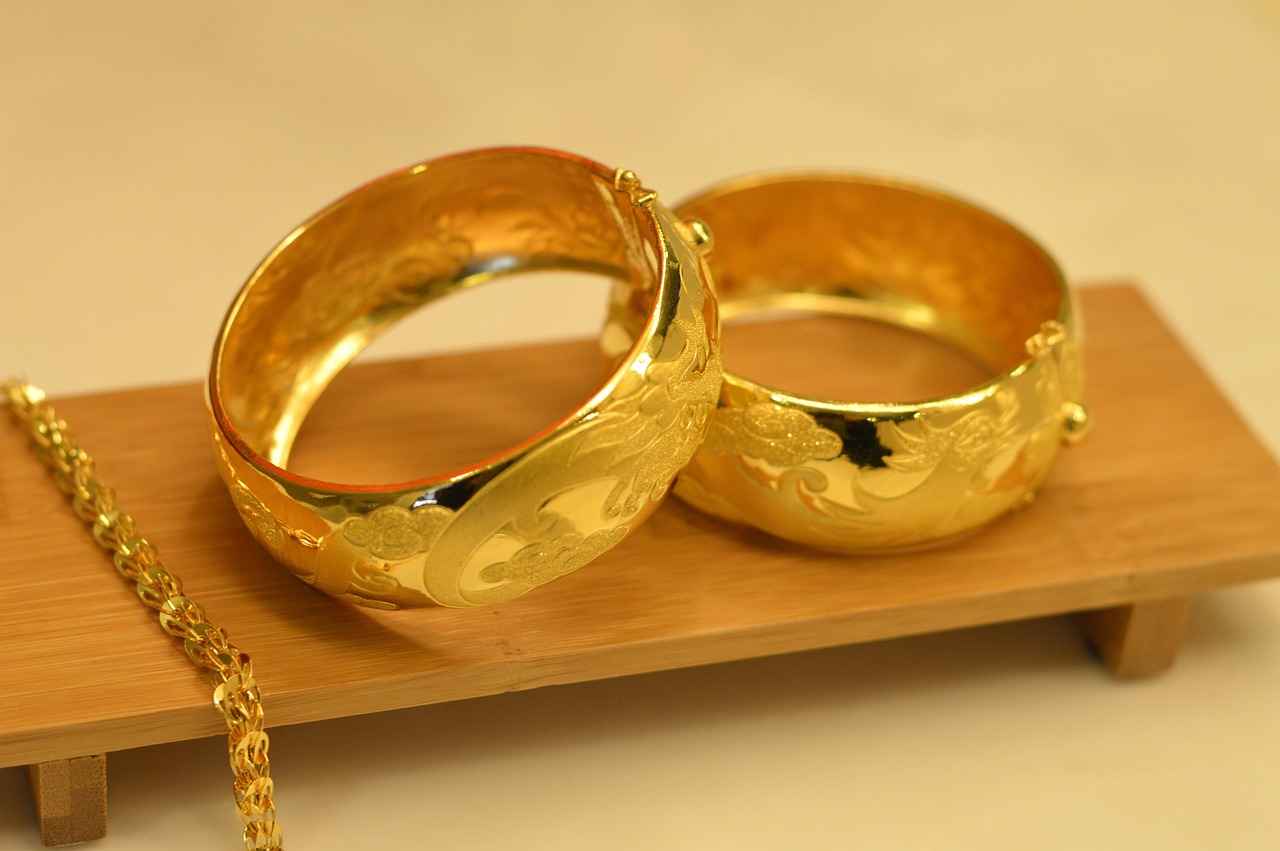
What Should You Avoid When Cleaning Jewelry?
Jewelry cleaning is an essential aspect of maintaining the beauty and integrity of your cherished pieces. While knowing the best methods to clean your jewelry is vital, understanding what to avoid is equally important. Certain cleaning practices can inadvertently damage your items, leading to costly repairs or even the loss of your beloved jewelry. Below, we explore common pitfalls to steer clear of when cleaning your jewelry.
Using the wrong cleaning techniques can lead to a range of issues, from tarnishing to permanent damage. Understanding what to avoid not only helps in preserving the aesthetic appeal of your jewelry but also ensures its longevity. This means you can enjoy your pieces for years to come without worrying about unnecessary wear and tear.
- Harsh Chemicals: Always steer clear of bleach, ammonia, and other abrasive cleaners. These substances can corrode metals and damage gemstones. Instead, opt for gentle, jewelry-specific cleaners that are safe for your pieces.
- Toothpaste: While it may seem like a quick fix for cleaning, toothpaste can be too abrasive and may scratch delicate surfaces. It’s best to use a soft cloth and mild soap instead.
- Vinegar: Although vinegar is a popular DIY cleaning agent, its acidity can harm certain metals and gemstones. Use it cautiously and only on items known to be safe.
- Excessive Scrubbing: While it’s important to clean your jewelry, using excessive force can scratch or dull the surface. Use gentle motions with a soft-bristle brush to avoid damaging your pieces.
- Soaking in Hot Water: Hot water can weaken certain adhesives used in jewelry settings, especially in pieces with glued stones. Always use lukewarm water for cleaning.
- Using a Steam Cleaner: While steam cleaning can be effective for some items, it can also loosen stones in delicate settings. Always check whether your jewelry is safe for this method.
Before cleaning any jewelry, consider the materials involved. For example, pearl and opal jewelry requires special care due to their porous nature. Always do a little research or consult a professional if you’re unsure about the best cleaning method for your specific pieces.
- Use Mild Soap and Water: This is one of the safest methods for cleaning most types of jewelry. Mix a few drops of mild soap with lukewarm water and gently clean with a soft cloth.
- Professional Cleaning: For valuable or intricate pieces, consider seeking professional help. Jewelers have the expertise and tools to clean and maintain your jewelry without causing damage.
- Regular Maintenance: Regularly inspect your jewelry for signs of wear or dirt buildup. Keeping your items clean and well-maintained will minimize the need for more intensive cleaning methods.
By being aware of what to avoid when cleaning your jewelry, you can ensure that your treasured pieces remain in excellent condition. Always prioritize gentle cleaning methods and safe products to preserve the beauty and integrity of your jewelry collection.
Harsh Chemicals: A Big No-No
Jewelry cleaning is an essential aspect of maintaining the beauty and integrity of your precious pieces. However, many people overlook the significance of using the right cleaning methods. One critical area of concern is the use of harsh chemicals, which can cause irreversible damage to both the metal and gemstones in your jewelry. In this section, we will delve deeper into why avoiding these substances is crucial for the longevity of your items.
Harsh chemicals include substances like bleach, ammonia, and various industrial-strength cleaners. While these products are effective for cleaning household surfaces, their potency can wreak havoc on your jewelry. Here’s why:
- Corrosion of Metals: Chemicals such as bleach can corrode metals like silver, gold, and platinum, leading to dullness and even structural damage.
- Damage to Gemstones: Many gemstones, including pearls and opals, are sensitive to harsh chemicals. Exposure can lead to discoloration, dullness, or even cracking.
- Compromised Settings: The settings that hold your gemstones in place can weaken when exposed to strong chemicals, increasing the risk of losing precious stones.
Instead of reaching for those potent cleaners, consider using gentle, jewelry-specific cleaning solutions. These products are formulated to effectively clean without causing harm. Here are some alternatives:
- Soap and Water: A mixture of mild dish soap and warm water is often sufficient for cleaning most jewelry types. It’s gentle yet effective.
- Commercial Jewelry Cleaners: Look for cleaners specifically designed for your type of jewelry. These products often contain safe ingredients that won’t damage your pieces.
- Natural Solutions: For a DIY approach, consider using a paste made from baking soda and water. This can work wonders on tarnished metals without the risk of chemical damage.
When cleaning your jewelry, it’s essential to adopt a gentle approach. Here are some tips to ensure your cleaning method is safe:
- Soft Cloths: Always use a soft, lint-free cloth to wipe your jewelry after cleaning. This helps to avoid scratches.
- Soft Brushes: A soft-bristle toothbrush can be used to clean intricate designs gently, ensuring no dirt is left behind without scratching your jewelry.
- Rinse Thoroughly: After cleaning, make sure to rinse your jewelry thoroughly under lukewarm water to remove any soap residue.
Choosing to avoid harsh chemicals is not just a matter of preference; it’s a necessity for preserving the beauty and value of your jewelry. Regular exposure to these substances can lead to:
- Increased Repair Costs: Damage caused by harsh chemicals can lead to expensive repairs or even the need for replacement.
- Loss of Sentimental Value: For many, jewelry carries sentimental value. Damaging these pieces can have emotional repercussions.
- Decreased Lifespan: Ultimately, using the wrong cleaning methods can significantly decrease the lifespan of your jewelry.
In conclusion, while it may be tempting to use readily available harsh chemicals for cleaning, the risks far outweigh any potential benefits. By opting for gentle, jewelry-specific cleaning solutions, you can ensure that your cherished pieces remain beautiful and intact for years to come.
Excessive Scrubbing: Less Is More
When it comes to maintaining the beauty and longevity of your jewelry, cleaning is an essential practice. However, it is crucial to understand that how you clean your pieces can significantly impact their appearance and durability. While it’s tempting to scrub vigorously to remove dirt and grime, excessive scrubbing can actually cause more harm than good.
Jewelry is often made from delicate materials, including various metals and gemstones that can be easily scratched or dulled. When you scrub too hard, you risk compromising the luster and finish of your beloved items. Instead of achieving a sparkling shine, you may end up with a piece that looks worn and tarnished.
To effectively clean your jewelry without damaging it, consider the following tips:
- Use Gentle Motions: Always clean your jewelry using soft, gentle motions. Instead of scrubbing aggressively, lightly buff the surface to remove dirt. This approach helps in preserving the integrity of your pieces.
- Choose the Right Tools: Opt for a soft-bristle toothbrush or a microfiber cloth. These tools are less likely to scratch delicate surfaces while still being effective in removing grime.
- Limit Cleaning Frequency: Over-cleaning can also lead to wear and tear. Assess how often your jewelry needs cleaning based on usage. For example, rings worn daily may require more frequent care than pieces worn occasionally.
In addition to these practices, it’s important to be mindful of the cleaning solutions you use. Harsh chemicals can exacerbate the effects of excessive scrubbing by further damaging the surface of your jewelry. Always opt for mild soaps or specialized jewelry cleaners that are designed to be gentle yet effective.
Moreover, if you notice that your jewelry has lost its shine despite regular cleaning, it might be time to reassess your cleaning technique. Sometimes, less is more, and a simple rinse with warm water followed by a gentle wipe can be sufficient to restore its sparkle.
For intricate designs or pieces with multiple stones, consider using a jewelry cleaning cloth designed specifically for polishing without the need for scrubbing. This method allows you to maintain the beauty of your jewelry without the risk of scratches.
Ultimately, the goal of cleaning your jewelry is to enhance its natural beauty while ensuring its longevity. By adopting a gentle approach and being mindful of your cleaning techniques, you can keep your pieces looking their best for years to come.
In summary, while cleaning your jewelry is essential, remember that excessive scrubbing can lead to scratches and diminish its luster. Embrace a gentle cleaning routine, use appropriate tools, and select safe cleaning agents to maintain the beauty and integrity of your cherished pieces.

How Often Should You Clean Your Jewelry?
When it comes to maintaining the beauty and longevity of your jewelry, understanding the right cleaning frequency is essential. The frequency of cleaning largely depends on how often you wear your pieces and the specific materials involved. Regular maintenance can help keep your jewelry looking its best, preventing tarnishing and dullness.
Determining how often to clean your jewelry involves several factors, including wear frequency and exposure to elements like dirt and oils. Jewelry worn daily, such as engagement rings or bracelets, may require more frequent cleaning compared to pieces that are worn occasionally.
- Daily Wear: If you wear your jewelry every day, it is recommended to clean it at least once a week. This is especially important for items that come into contact with skin oils, lotions, and sweat.
- Occasional Use: For jewelry that is worn less frequently, such as special occasion pieces, cleaning once a month may suffice. However, inspect these items regularly for signs of dirt or tarnish.
It’s crucial to recognize when your jewelry requires a good cleaning. Look out for the following signs:
- Dullness: If your jewelry appears less shiny than usual, it’s time for a clean.
- Discoloration: Any change in color, particularly with metals, can indicate tarnishing.
- Visible Dirt: If you can see grime or residue on your pieces, they need attention.
Different materials may require different cleaning frequencies:
- Gold and Silver: These metals can tarnish over time, so regular cleaning is essential to maintain their luster.
- Pearls and Opals: These delicate gemstones should be cleaned less frequently, as they can be damaged by harsh cleaning methods. A gentle wipe with a soft cloth is often sufficient.
- Diamonds and Other Hard Gemstones: These can withstand more rigorous cleaning methods, but be cautious of their settings.
While it’s important to keep your jewelry clean, over-cleaning can lead to wear and tear. Excessive scrubbing or using harsh chemicals can damage the finish and integrity of your pieces. Always opt for gentle cleaning methods and tools, such as soft brushes or cloths, to preserve their beauty.
If you prefer to clean your jewelry at home, consider these simple methods:
- Soap and Water: A mixture of mild dish soap and warm water can effectively clean most jewelry. Soak for a few minutes, then gently scrub with a soft-bristle toothbrush.
- Vinegar Solution: For tarnished silver, a solution of equal parts vinegar and water can help restore shine.
In conclusion, understanding how often to clean your jewelry is crucial for maintaining its beauty. By considering factors like wear frequency and material type, you can ensure your treasured pieces remain in excellent condition for years to come.
Daily Wear vs. Occasional Use
When it comes to maintaining the beauty and longevity of your jewelry, understanding the frequency of cleaning is essential. Different types of jewelry require different care, especially when considering how often they are worn. This section will delve into the distinctions between daily wear items and those that are only worn on special occasions.
Jewelry that is worn on a daily basis, such as rings and bracelets, tends to accumulate dirt, oils, and grime more quickly than pieces that are worn less frequently. The constant exposure to the elements, including sweat and environmental pollutants, can lead to a buildup that dulls the shine of your favorite pieces. Therefore, it’s advisable to clean these items at least once a week to maintain their luster and prevent any long-term damage.
On the other hand, jewelry that is worn occasionally—like statement necklaces or formal earrings—can be cleaned less frequently. Depending on their exposure to dirt and oils, these pieces may only need a thorough cleaning once a month or even less. However, it’s important to inspect these items regularly for any signs of tarnishing or dirt buildup, especially if they are stored for long periods.
- Material Type: Different materials have varying levels of durability and susceptibility to tarnishing. For example, gold and platinum are less prone to tarnishing than silver.
- Daily Exposure: Jewelry that comes into contact with lotions, perfumes, or cleaning products may require more frequent cleaning.
- Activity Level: If you lead an active lifestyle, your daily wear jewelry will likely need more attention.
Regardless of how often you wear your jewelry, there are clear signs that indicate it’s time for a cleaning session. Look for:
- Dullness: If your jewelry appears less shiny than usual, it may be time to clean it.
- Visible Dirt: Any buildup of grime or residue is a clear sign that cleaning is necessary.
- Discoloration: If you notice any changes in color, especially with silver or gold pieces, cleaning can help restore their original look.
For both daily and occasional pieces, it’s important to use the right cleaning methods to avoid damage. Here are some tips:
- Use Gentle Cleaners: Opt for mild soap and water or a specialized jewelry cleaner to avoid harsh chemicals.
- Soft Brushes: A soft-bristled toothbrush can help remove dirt without scratching delicate surfaces.
- Dry Thoroughly: After cleaning, ensure that your jewelry is completely dry before storing it to prevent moisture-related issues.
In summary, the care you provide to your jewelry should reflect how often you wear it. Daily pieces require more frequent cleaning to maintain their shine and integrity, while occasional items can be cleaned less often. By staying attentive to the condition of your jewelry, you can ensure that each piece remains a cherished part of your collection for years to come.
Signs That Your Jewelry Needs Cleaning
Jewelry is often cherished not only for its beauty but also for the memories and emotions it represents. However, over time, even the most exquisite pieces can lose their luster. To keep your jewelry looking its best, it is essential to recognize the signs that indicate it needs cleaning. Understanding these signs can help you maintain your jewelry’s shine and integrity.
- Dullness: One of the most noticeable signs that your jewelry requires cleaning is a lack of shine. When pieces that once sparkled appear lackluster, it’s time to take action.
- Discoloration: If you observe any changes in color, such as yellowing or darkening, this can be a clear indicator of tarnish or buildup of dirt and oils.
- Visible Dirt: Accumulation of dirt, dust, or grime can be easily spotted on your jewelry. If you can see dirt on the surface, it’s definitely time for a thorough cleaning.
- Cloudy Gemstones: Precious stones, such as diamonds or sapphires, should be clear and vibrant. If they appear cloudy or dull, it’s a sign that they need to be cleaned.
- Unpleasant Odors: Sometimes, jewelry can develop an unpleasant smell due to accumulated oils and dirt. If your jewelry smells off, it’s time to give it a good clean.
Regular cleaning not only enhances the appearance of your jewelry but also helps in preserving its value. Neglecting to clean your pieces can lead to irreversible damage, especially for items made from softer metals or with delicate stones. By recognizing the signs that indicate cleaning is necessary, you can prevent buildup that may cause long-term issues.
To maintain the shine and beauty of your jewelry, consider implementing a regular cleaning routine. This can include:
- Routine Inspections: Regularly check your jewelry for any signs of dullness or dirt.
- Gentle Cleaning: Use mild soap and water for a simple clean, ensuring you rinse and dry properly.
- Storage Practices: Store your jewelry in a dry, clean place to minimize exposure to dust and moisture.
For valuable or intricate pieces, it may be wise to consult a professional jeweler for cleaning. They have specialized tools and solutions that can safely restore your jewelry’s original beauty without causing damage.
By staying vigilant and recognizing the signs that your jewelry needs cleaning, you can ensure that your treasured pieces remain as stunning as the day you acquired them. Regular maintenance not only enhances aesthetic appeal but also extends the life of your beloved jewelry.

Can You Clean Jewelry at Home?
When it comes to maintaining the beauty and shine of your jewelry, many people wonder, “Can you clean jewelry at home?” The answer is a resounding yes. With the right techniques and common household items, you can keep your jewelry looking its best without the need for professional help. This article will explore various methods, tips, and precautions to ensure your treasured pieces remain radiant.
Cleaning your jewelry at home is not only convenient but also cost-effective. Regular cleaning helps to remove dirt, oils, and tarnish that accumulate over time, ensuring your pieces shine brightly. Additionally, maintaining your jewelry can prolong its lifespan, allowing you to enjoy your favorite items for years to come.
There are several household items that can be effective in cleaning jewelry. Here are some popular options:
- Dish Soap: A gentle dish soap mixed with warm water is one of the safest methods for cleaning most types of jewelry.
- Baking Soda: This versatile ingredient can be used to create a paste that effectively removes tarnish from silver.
- Vinegar: White vinegar can be a powerful cleaner for gold and silver jewelry when mixed with baking soda.
- Toothpaste: A non-gel toothpaste can be used for a quick polish on certain metals, but use sparingly to avoid scratches.
To clean your jewelry effectively, follow these steps:
- Prepare Your Cleaning Solution: Mix a few drops of dish soap with warm water in a small bowl.
- Soak: Place your jewelry in the solution for a few minutes to loosen dirt and grime.
- Gently Scrub: Use a soft-bristle toothbrush to gently scrub intricate designs and settings. Be careful not to apply too much pressure.
- Rinse Thoroughly: Rinse your jewelry under lukewarm water to remove any soap residue.
- Dry: Use a soft, lint-free cloth to gently dry your pieces, restoring their shine.
Most jewelry types can be safely cleaned at home, including:
- Gold: Both yellow and white gold can be cleaned using the methods mentioned above.
- Silver: Silver jewelry often requires regular cleaning to prevent tarnishing.
- Costume Jewelry: Ensure that any stones or embellishments are securely attached before cleaning.
While many pieces can be cleaned at home, some should be handled with care:
- Delicate Gemstones: Pearls, opals, and other soft stones can be damaged by harsh cleaning methods.
- Antique Jewelry: Vintage pieces may have fragile settings or materials that require professional attention.
If your jewelry is particularly valuable or has significant sentimental value, it may be best to consult a professional cleaner. Experts can provide deep cleaning and repairs that may not be possible at home, ensuring your cherished items are preserved.
In conclusion, cleaning jewelry at home is not only feasible but also an effective way to maintain the beauty of your pieces. By using common household items and following safe cleaning practices, you can keep your jewelry looking stunning for years to come.
DIY Cleaning Solutions: What Works?
When it comes to maintaining the beauty and longevity of your jewelry, understanding DIY cleaning solutions is essential. Many people are turning to homemade remedies, such as vinegar and baking soda, for cleaning their jewelry effectively. However, it’s crucial to know which methods are safe for your specific pieces.
DIY cleaning solutions are not only cost-effective but also environmentally friendly. Many of these solutions use ingredients that are already available in your home, making them convenient. Additionally, they often avoid the harsh chemicals found in commercial cleaners, which can be damaging to both your jewelry and the environment.
Vinegar is an excellent natural cleaner due to its acidic properties. It can effectively remove tarnish and grime from various types of metal, especially silver. To use vinegar, simply soak your jewelry in a mixture of equal parts vinegar and water for about 15-20 minutes. After soaking, gently scrub with a soft brush and rinse thoroughly.
Baking soda is another popular DIY cleaning agent. It acts as a gentle abrasive, making it suitable for cleaning jewelry without scratching the surface. To create a cleaning paste, mix baking soda with water to form a thick paste. Apply it to the jewelry with a soft cloth or brush, then rinse and dry. However, be cautious with porous stones like opals or pearls, as baking soda can be too harsh.
For enhanced cleaning power, consider combining vinegar and baking soda. This mixture creates a fizzing reaction that can help lift dirt and grime. However, use this method sparingly, as the reaction can be too strong for delicate pieces. Always test on a small area first.
While homemade solutions can be effective, they are not suitable for all types of jewelry. Avoid using vinegar or baking soda on:
- Gold jewelry, especially if it is plated, as these solutions can strip the finish.
- Costume jewelry that may contain glued stones or delicate materials.
- Pearls and other porous gemstones, which can be damaged by acidic or abrasive substances.
Before applying any DIY cleaning solution, it’s important to assess the materials of your jewelry. Always start with a gentle method, such as warm soapy water, to see if it effectively cleans your pieces without risk. If you decide to use vinegar or baking soda, follow these steps:
1. Prepare the solution in a bowl.2. Soak the jewelry for the recommended time.3. Gently scrub with a soft brush.4. Rinse thoroughly with clean water.5. Dry with a soft cloth.
For intricate pieces, valuable items, or jewelry with sensitive stones, it may be best to seek professional cleaning services. Experts have the tools and knowledge to clean your jewelry safely without risking damage. Regular professional cleanings can also help maintain the integrity and shine of your pieces.
In conclusion, while DIY cleaning solutions like vinegar and baking soda can be effective for certain types of jewelry, it’s vital to understand their limitations and the materials you are working with. By following safe practices, you can keep your jewelry looking its best without compromising its quality.
When to Seek Professional Help
When it comes to maintaining the beauty and integrity of your jewelry, understanding when to seek professional help is crucial. While many cleaning methods can be performed at home, certain pieces require specialized care that only experts can provide. This article explores the signs that indicate your jewelry needs professional attention and the benefits of opting for professional cleaning services.
Professional cleaning services offer numerous advantages, especially for valuable or delicate items. These experts possess the knowledge and experience to handle a variety of materials, ensuring that your jewelry receives the best care possible. Here are some key reasons to consider:
- Expertise in Handling Delicate Items: Some jewelry pieces, especially those with intricate designs or fragile gemstones, require specialized techniques that can only be performed by trained professionals.
- Advanced Cleaning Techniques: Professionals often use advanced tools, such as ultrasonic cleaners, which can effectively remove dirt and grime from hard-to-reach areas without risking damage.
- Repair Services: If your jewelry has scratches, loose stones, or other damage, professionals can provide necessary repairs that go beyond simple cleaning.
It’s essential to recognize when your jewelry requires more than just a home cleaning. Here are some signs that indicate it’s time to seek professional help:
- Visible Damage: If you notice any cracks, chips, or loose stones, it’s vital to have your jewelry assessed by a professional to prevent further damage.
- Severe Tarnishing: While mild tarnishing can often be addressed at home, severe tarnishing may require specialized cleaning solutions that professionals have access to.
- Frequent Repairs: If you find yourself repeatedly needing repairs, it may be worth consulting a professional to evaluate the overall condition and care of your jewelry.
When you decide to take your jewelry to a professional cleaner, you can expect a thorough evaluation and a tailored cleaning process. Here’s what typically happens:
- Assessment: The jeweler will inspect your piece for any damage and determine the best cleaning method.
- Deep Cleaning: Using specialized tools and solutions, they will clean your jewelry, removing dirt, oils, and tarnish.
- Repairs: If any repairs are needed, they will discuss options and costs with you before proceeding.
The cost of professional jewelry cleaning can vary widely based on several factors, including:
- Type of Jewelry: More intricate pieces or those made with precious metals and stones may incur higher fees.
- Condition of the Item: If your jewelry requires repairs in addition to cleaning, the cost will increase.
- Service Provider: Different jewelers may have varying pricing structures, so it’s wise to shop around.
In conclusion, while regular at-home cleaning can help maintain your jewelry, there are times when seeking professional help is essential. By recognizing the signs that indicate the need for expert care, you can ensure that your cherished pieces remain in optimal condition for years to come.
Frequently Asked Questions
- How often should I clean my jewelry?
The frequency of cleaning your jewelry really depends on how often you wear it. Daily pieces, like rings or bracelets, might need cleaning every few weeks, while occasional wear items can be cleaned less frequently. Just keep an eye out for signs of dullness or dirt!
- Can I use regular soap to clean my jewelry?
Absolutely! A mild dish soap mixed with warm water is a safe and effective cleaning solution for most jewelry types. Just make sure to avoid harsh chemicals that could damage your pieces.
- Are ultrasonic cleaners safe for all types of jewelry?
Not necessarily! While ultrasonic cleaners are great for intricate designs, they can damage certain gemstones or delicate pieces. Always check if your jewelry is suitable for this method before diving in!
- What should I avoid when cleaning my jewelry?
Steer clear of harsh chemicals like bleach or ammonia, as they can corrode metals and damage stones. Also, excessive scrubbing can scratch your jewelry, so remember: less is more!
- Can I clean my jewelry at home?
Yes, you can! Many effective cleaning methods can be done at home using common household items. Just be sure to research which methods are safe for your specific jewelry types.
